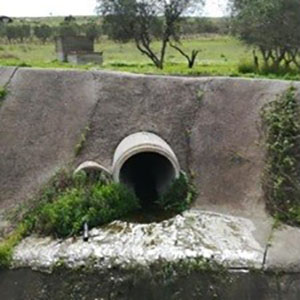Evaluating flow regime alterations due to point sources in intermittent rivers: A modelling approach

Published: 28 June 2022
Abstract Views: 823
PDF: 438
S1: 201
S2: 217
S3: 160
HTML: 42
S1: 201
S2: 217
S3: 160
HTML: 42
Publisher's note
All claims expressed in this article are solely those of the authors and do not necessarily represent those of their affiliated organizations, or those of the publisher, the editors and the reviewers. Any product that may be evaluated in this article or claim that may be made by its manufacturer is not guaranteed or endorsed by the publisher.
All claims expressed in this article are solely those of the authors and do not necessarily represent those of their affiliated organizations, or those of the publisher, the editors and the reviewers. Any product that may be evaluated in this article or claim that may be made by its manufacturer is not guaranteed or endorsed by the publisher.
Similar Articles
- Alessandro Toccolini, Simone Felisari, Paolo Stefano Ferrario, Design of green spaces located below the urbanised level. Themes, problems and solutions applied to a case study , Journal of Agricultural Engineering: Vol. 46 No. 4 (2015)
- Justo Garcìa Navarro, Vincenzo Giovanni Mannella, Marco Vizzarri, CONSERVATION AND ENJOYMENT OF SPANISH NATURE PARKS. A PROPOSAL FOR THE MANAGEMENT OF PUBLIC USE , Journal of Agricultural Engineering: Vol. 38 No. 3 (2007)
- Martin Thalheimer, A low-cost electronic tensiometer system for continuous monitoring of soil water potential , Journal of Agricultural Engineering: Vol. 44 No. 3 (2013)
- Alessandro D'Emilio, Simona M.C. Porto, Giovanni Cascone, Marco Bella, Marco Gulino, Mitigating heat stress of dairy cows bred in a free-stall barn by sprinkler systems coupled with forced ventilation , Journal of Agricultural Engineering: Vol. 48 No. 4 (2017)
- Edwin Andrés Villagrán, Carlos Ricardo Bojacá, Effects of surrounding objects on the thermal performance of passively ventilated greenhouses , Journal of Agricultural Engineering: Vol. 50 No. 1 (2019)
- Yiming Xiao, Jianhua Wang, Hongyi Xiong, Fangjun Xiao, Renhuan Huang, Licong Hong, Bofei Wu, Jinfeng Zhou, Yongbin Long, Yubin Lan, Lychee cultivar fine-grained image classification method based on improved ResNet-34 residual network , Journal of Agricultural Engineering: Vol. 55 No. 3 (2024)
- Christopher O. Akinbile, Remigius C. Eze, Habeeb Yusuf, Babatunde S. Ewulo, Adeniyi Olayanju, Effect of some selected soil properties, moisture content, yield and consumptive water use on two Cassava (TMS 0581 and TME 419) varieties , Journal of Agricultural Engineering: Vol. 50 No. 4 (2019)
- Arianna Facchi, Gabriele Baroni, Mirco Boschetti, Claudio Gandolfi, COMPARING OPTICALAND DIRECT METHODS FOR LEAFAREA INDEX DETERMINATION IN A MAIZE CROP , Journal of Agricultural Engineering: Vol. 41 No. 1 (2010)
- Angelo Fabbri, Alessandro Angioloni, Andrea Di Stefano, Enrico Fava, Adriano Guarnieri, Giulio Lorenzini, PRELIMINARY INVESTIGATION OF PASTA EXTRUSION PROCESS: RHEOLOGICAL CHARACTERIZATION OF SEMOLINA DOUGH , Journal of Agricultural Engineering: Vol. 38 No. 2 (2007)
- Davide Boscaro, Andrea Pezzuolo, Stefano Grigolato, Raffaele Cavalli, Francesco Marinello, Luigi Sartori, Preliminary analysis on mowing and harvesting grass along riverbanks for the supply of anaerobic digestion plants in north-eastern Italy , Journal of Agricultural Engineering: Vol. 46 No. 3 (2015)
<< < 37 38 39 40 41 42 43 > >>
You may also start an advanced similarity search for this article.

 https://doi.org/10.4081/jae.2022.1333
https://doi.org/10.4081/jae.2022.1333







